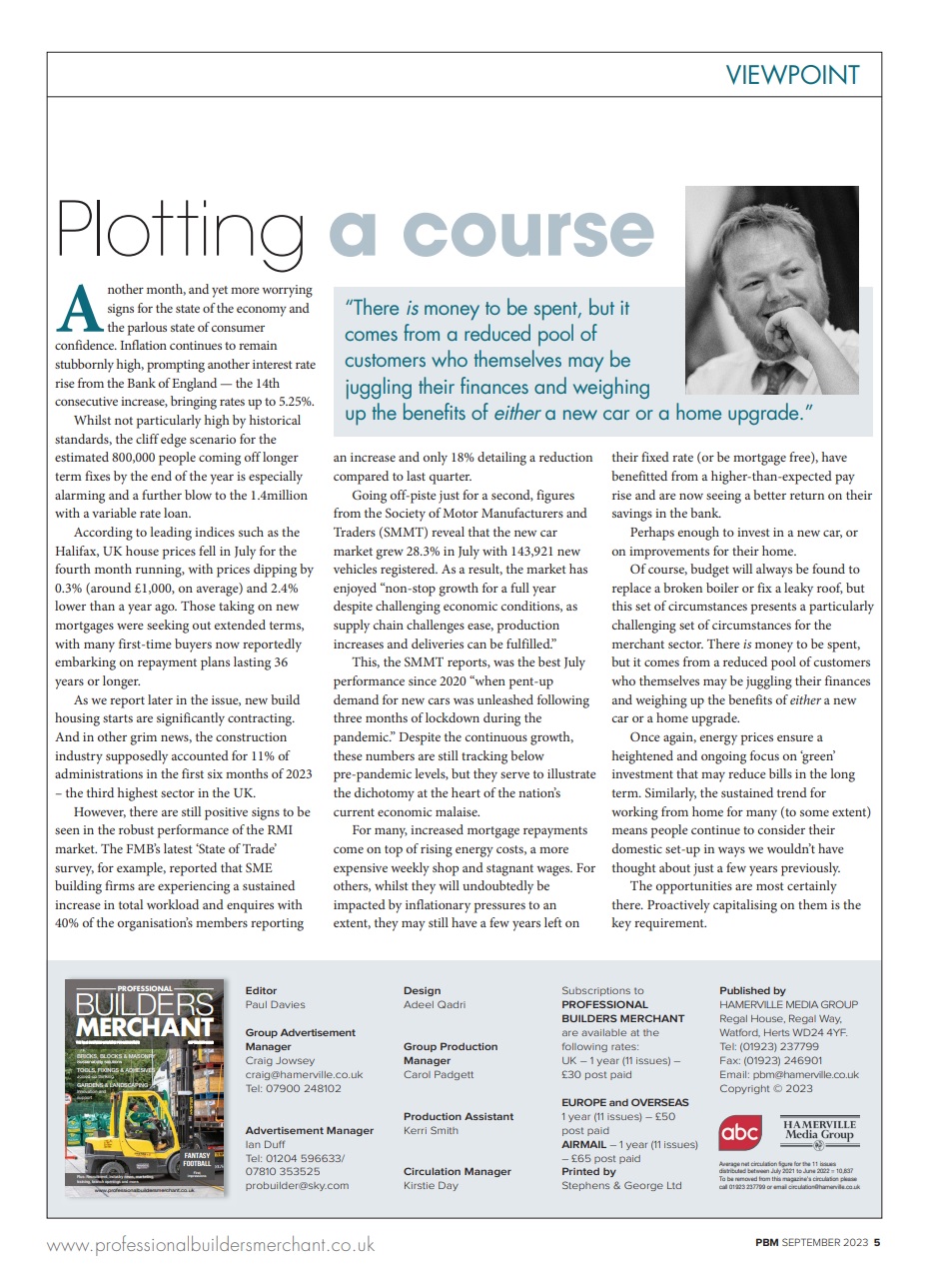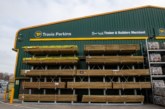
In the Viewpoint column of PBM’s September issue, editor Paul Davies considered the current economic malaise whilst looking for the bright spots amidst the gloom.
Another month, and yet more worrying signs for the state of the economy and the parlous state of consumer confidence. Inflation continues to remain stubbornly high, prompting another interest rate rise from the Bank of England — the 14th consecutive increase, bringing rates up to 5.25%.
Whilst not particularly high by historical standards, the cliff edge scenario for the estimated 800,000 people coming off longer terms fixes by the end of the year is especially alarming and a further blow to the 1.4million with a variable rate loan.
According to leading indices such as the Halifax, UK house prices fell in July for the fourth month running, with prices dipping by 0.3% (around £1,000, on average) and 2.4% lower than a year ago. Those taking on new mortgages were seeking out extended terms, with many first-time buyers now reportedly embarking on repayment plans lasting 36 years or longer.
As we report later in the issue, new build housing starts are significantly contracting. And in other grim news, the construction industry supposedly accounted for 11% of administrations in the first six months of 2023 – the third highest sector in the UK.
“There is money to be spent, but it comes from a reduced pool of customers who themselves may be juggling their finances and weighing up the benefits of either a new car or a home upgrade.”
However, there are still positive signs to be seen in the robust performance of the RMI market. The FMB’s latest ‘State of Trade’ survey, for example, reported that SME building firms are experiencing a sustained increase in total workload and enquires with 40% of the organisation’s members reporting an increase and only 18% detailing a reduction compared to last quarter.
Going off-piste just for a second, figures from the Society of Motor Manufacturers and Traders (SMMT) reveal that the new car market grew 28.3% in July with 143,921 new vehicles registered. As a result, the market has enjoyed “non-stop growth for a full year despite challenging economic conditions, as supply chain challenges ease, production increases and deliveries can be fulfilled.”
This, the SMMT reports, was the best July performance since 2020 “when pent-up demand for new cars was unleashed following three months of lockdown during the pandemic.” Despite the continuous growth, these numbers are still tracking below pre-pandemic levels, but they serve to illustrate the dichotomy at the heart of the nation’s current economic malaise.
For many, increased mortgage repayments come on top of rising energy costs, a more expensive weekly shop and stagnant wages. For others, whilst they will undoubtedly be impacted by inflationary pressures to an extent, they may still have a few years left on their fixed rate (or be mortgage free), have benefitted from a higher-than-expected pay rise and are now seeing a better return on their savings in the bank.
Perhaps enough to invest in a new car, or on improvements for their home…
Of course, budget will always be found to replace a broken boiler or fix a leaky roof, but this perhaps presents a particularly challenging set of circumstances for the merchant sector. There is money to be spent, but it comes from a reduced pool of customers who themselves may be juggling their finances and weighing up the benefits of either a new car or a home upgrade.
Once again, energy prices ensure a heightened and ongoing focus on ‘green’ investment that may reduce bills in the long term. Similarly, the sustained trend for working from home for many (to some extent) means people continue to consider their domestic set-up in ways we wouldn’t have thought about just a few years previously.
The opportunities are most certainly there. Capitalising on them most effectively is the key requirement.









